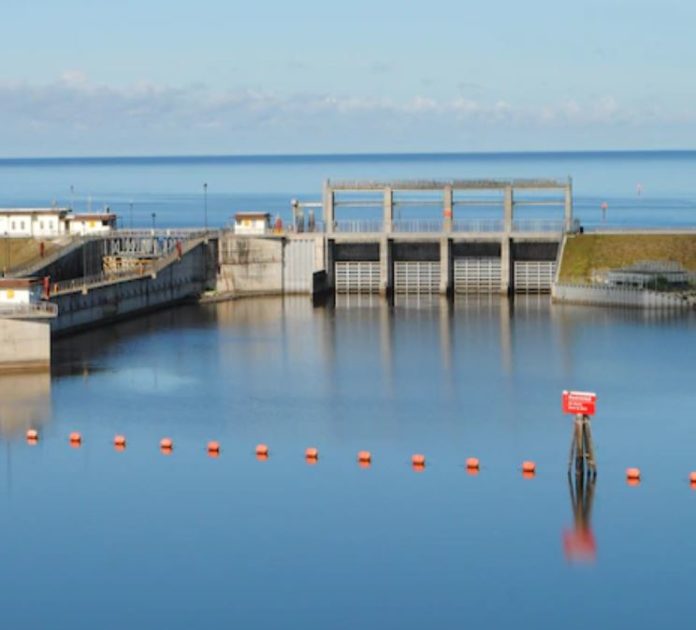This week it appeared every local government official came to a sudden realization that trouble is brewing in Lake Okeechobee.
With reports increasing that blue-green algae may soon be coursing down the Caloosahatchee, and find its way to Southwest Florida, a possibe repeat of 2018 has everyone taking aim at The Army Corps of Engineers.
The Corps is writing the new Lake Okeechobee System Operating Manual (LOSOM). The updated manual is required by law to be completed in July and will be how the Corps operates lake flow for the next decade.
LOSOM, which will replace the previous Lake O release schedule (LORS), determines where and how much water gets released from the lake. “The goal of the Lake Okeechobee System Operating Manual effort is to incorporate flexibility in Lake Okeechobee operations, while balancing the congressionally authorized project purposes for flood control, water supply, recreation, navigation, environmental effects to fish and wildlife, and cultural and recreational resources,” according to Army Corp website.
Earlier this month the project delivery team which is a group of federal officials and elected officers of state, local or tribal governments or their designated employees overseeing the project, met to hear the alternatives proposed by the Army Corp. There were 5 options which in many people’s opinion were not created equally nor balanced.
Everglades Science Coordinator Dr. Paul Gray from the Florida Audubon told South Central Florida Life, “It looks like some alternatives take one stakeholder group and make it look good for them and the chips fall where they may for everyone else.” Gray was not alone.

In an article written this week, Sanibel-Captiva Conservation Foundation Environmental Policy Director Jamie Evans, says the proposals presented are anything but balanced when it comes to the Caloosahatchee. “Of the five options presented, two would eliminate all flows to the St. Lucie estuary, except when lake levels get above critical levels — resulting in increased high-volume damaging discharges to the Caloosahatchee.”
 Lee County hired modelers to advise the Board of Commissioners on the situation. Board members were told none of the dodels drafted by the Corps. are acceptable to Lee County. A letter sent to Army Corp of Engineers Colonel Andrew Kelly by Lee County Board Chairman Kevin Ruane shows just how exasperated local elected officials are at this point. Ruane expressed, “deep concern about the management of Lake Okeechobee and the direction the Army Corps is moving in with the modeling of LOSOM.” Ruane is very worried about the hospitality industry which was already dealing with the 2018 water issue which hurt tourism and the pandemic which shut the economy down completely.
Lee County hired modelers to advise the Board of Commissioners on the situation. Board members were told none of the dodels drafted by the Corps. are acceptable to Lee County. A letter sent to Army Corp of Engineers Colonel Andrew Kelly by Lee County Board Chairman Kevin Ruane shows just how exasperated local elected officials are at this point. Ruane expressed, “deep concern about the management of Lake Okeechobee and the direction the Army Corps is moving in with the modeling of LOSOM.” Ruane is very worried about the hospitality industry which was already dealing with the 2018 water issue which hurt tourism and the pandemic which shut the economy down completely.

As always when you talk about this issue, Big Sugar has to be part of the conversation. Florida Congressman Brian Mast also wrote a letter Col. Kelly voicing his displeasure with one of the options, “I’m writing today to urge you to reject the Lake Okeechobee System Operating Manual, Alternative BB, which was written and submitted by two lobbyists for the Florida Sugar Cane League. Under no circumstances should lobbyists for the sugar cane industry be empowered to write the Lake Okeechobee System Operating Manual, which determines when toxic discharges from Lake Okeechobee are sent to estuaries.”
That sentiment was echoed by Jamie Evans in the SCCF newsletter this week. “One alternative was put together by lobbyists for the Florida Sugar Cane League, labeled the “Lakeside Communities Plan”— need I say more?”
 The Governor, addressing the needs of both rivers, penned a letter of his own, this one was sent to Army Corps leadership in Washington D.C. DeSantis told the agency it “must do better” to manage the lake and prevent releases carrying potentially toxic cyanobacteria to the Caloosahatchee and St. Lucie Rivers.
The Governor, addressing the needs of both rivers, penned a letter of his own, this one was sent to Army Corps leadership in Washington D.C. DeSantis told the agency it “must do better” to manage the lake and prevent releases carrying potentially toxic cyanobacteria to the Caloosahatchee and St. Lucie Rivers.
It’s clear neither side of the state wants toxic water from Lake O sent to their rivers, but the way forward seems murky. As of this week water continues to flow into the Caloosahatchee, but not the St. Lucie which stopped receiving flows in April.
Evans summed it up by saying, “If the Corps is serious about balancing the purposes of LOSOM, it needs to take a long, hard look in the mirror to see if it’s doing the work of the people or the work of a few powerful individuals.”


Comments are closed.